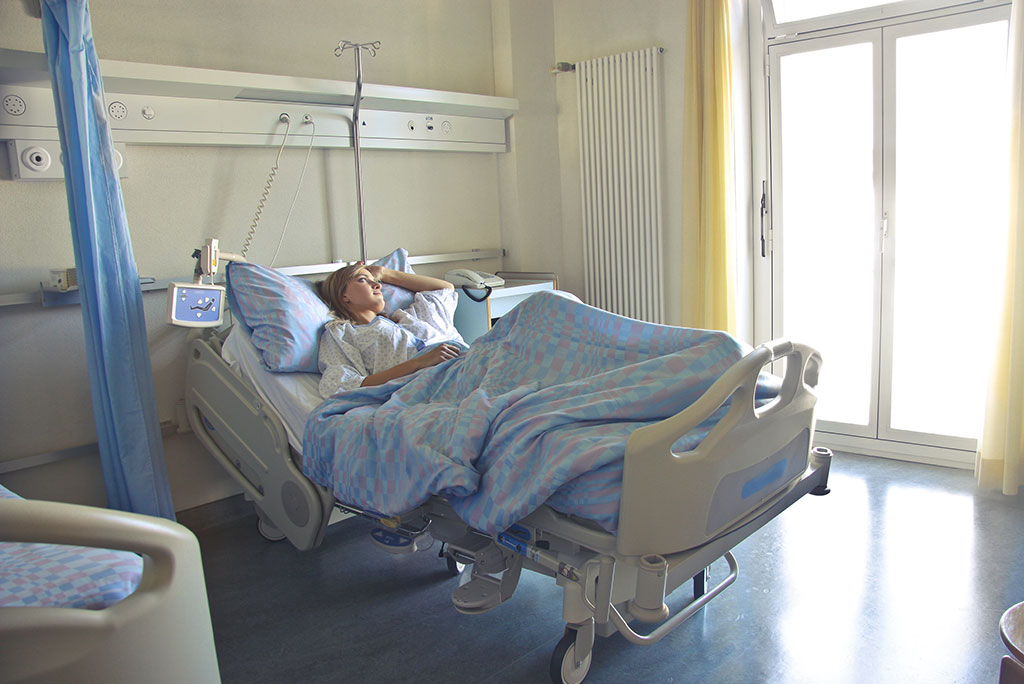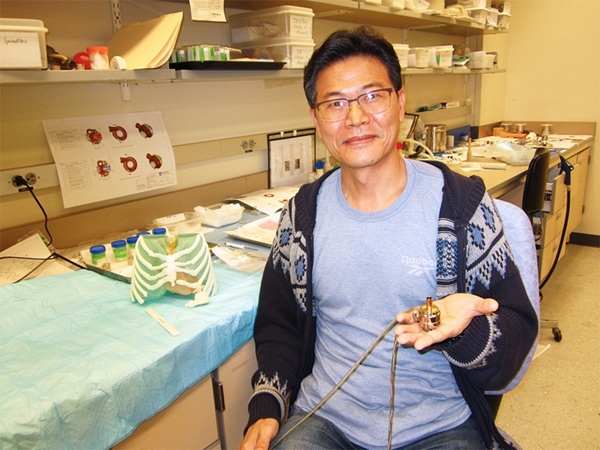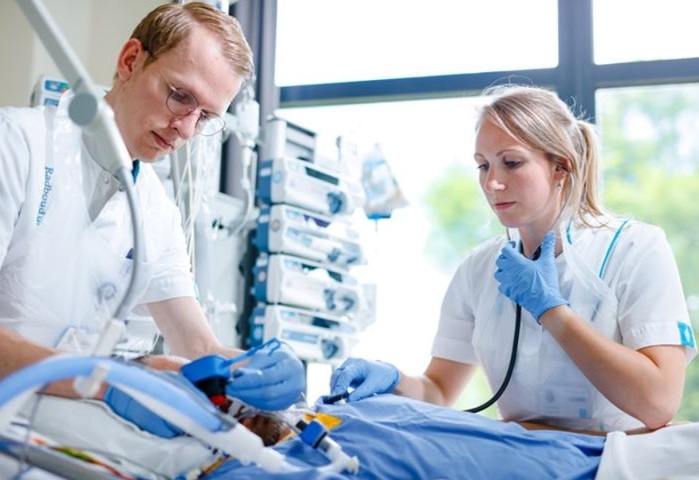Diagnostic Tool Applies Machine Learning to Identify and Predict Sepsis Cases
|
By HospiMedica International staff writers Posted on 25 Oct 2022 |

Sepsis, the overreaction of the immune system in response to an infection, causes an estimated 20% of deaths globally and as many as 20 to 50% of U.S. hospital deaths each year. Despite its prevalence and severity, however, the condition is difficult to diagnose and treat effectively. The disease can cause decreased blood flow to vital organs, inflammation throughout the body, and abnormal blood clotting. Therefore, if sepsis isn’t recognized and treated quickly, it can lead to shock, organ failure, and death. But it can be difficult to identify which pathogen is causing sepsis, or whether an infection is in the bloodstream or elsewhere in the body. And in many patients with symptoms that resemble sepsis, it can be challenging to determine whether they truly have an infection at all. Now, researchers have developed a new diagnostic method that applies machine learning to advanced genomics data from both microbe and host – to identify and predict sepsis cases. The approach is surprisingly accurate, and has the potential to far exceed current diagnostic capabilities.
Current sepsis diagnostics focus on detecting bacteria by growing them in culture, a process that is “essential for appropriate antibiotic therapy, which is critical for sepsis survival,” according to the researchers at the Chan Zuckerberg Biohub (CZ Biohub, San Francisco, CA, USA), the Chan Zuckerberg Initiative (CZI, Redwood City, CA, USA), and UC San Francisco (UCSF, San Francisco, CA, USA) who developed the new method. But culturing these pathogens is time-consuming and doesn’t always correctly identify the bacterium that is causing the infection. Similarly for viruses, PCR tests can detect that viruses are infecting a patient but don’t always identify the particular virus that’s causing sepsis. In the absence of a definitive diagnosis, doctors often prescribe a cocktail of antibiotics in an effort to stop the infection, but the overuse of antibiotics has led to increased antibiotic resistance worldwide.
For the study, the researchers analyzed whole blood and plasma samples from more than 350 critically ill patients who had been admitted to UCSF Medical Center or the Zuckerberg San Francisco General Hospital between 2010 and 2018. But rather than relying on cultures to identify pathogens in these samples, a team led by CZ Biohub scientists instead used metagenomic next-generation sequencing (mNGS). This method identifies all the nucleic acids or genetic data present in a sample, then compares those data to reference genomes to identify the microbial organisms present. This technique allows scientists to identify genetic material from entirely different kingdoms of organisms – whether bacteria, viruses, or fungi – that are present in the same sample. However, detecting and identifying the presence of a pathogen alone isn’t enough for accurate sepsis diagnosis, so the Biohub researchers also performed transcriptional profiling – which quantifies gene expression – to capture the patient’s response to infection.
Next they applied machine learning to the mNGS and transcriptional data to distinguish between sepsis and other critical illnesses and thus confirm the diagnosis. The researchers, created an integrated host–microbe model trained on data from patients in whom either sepsis or non-infectious systemic inflammatory illnesses had been established, which enabled sepsis diagnosis with very high accuracy. To start, the researchers identified changes in gene expression between patients with confirmed sepsis and non-infectious systemic inflammatory conditions that appear clinically similar, then used machine learning to identify the genes that could best predict those changes. The researchers found that when traditional bacterial culture identified a sepsis-causing pathogen, there was usually an overabundance of genetic material from that pathogen in the corresponding plasma sample analyzed by mNGS. With that in mind, the researchers programmed the model to identify organisms present in disproportionately high abundance compared to other microbes in the sample, and to then compare those to a reference index of well-known sepsis-causing microbes.
The researchers found that the mNGS method and their corresponding model worked better than expected: They were able to identify 99% of confirmed bacterial sepsis cases, 92% of confirmed viral sepsis cases, and were able to predict sepsis in 74% of clinically suspected cases that hadn’t been definitively diagnosed. The team was also excited to discover that they could use this combined host-response and microbe detection method to diagnose sepsis using plasma samples, which are routinely collected from most patients as part of standard clinical care. The team hopes to build upon this successful diagnostic technique by developing a model that can also predict antibiotic resistance from pathogens detected with this method. Furthermore, the researchers hope to eventually be able to predict outcomes of patients with sepsis, “such as mortality or length of stay in the hospital, which would provide key information that would allow clinicians to better care for their patients and match resources to the patients who need them the most.”
“One of the key challenges with sepsis is diagnosis. Existing diagnostic tests are not able to capture the dual-sided nature of the disease – the infection itself and the host’s immune response to the infection,” said senior author Chaz Langelier, M.D., Ph.D., an associate professor of medicine in UCSF’s Division of Infectious Diseases and a CZ Biohub Investigator. “We developed the model by looking at a bunch of metagenomics data alongside results from traditional clinical tests. We've had some success doing that for respiratory infections, but no one has come up with a good approach for sepsis.”
“As physicians, we never want to miss a case of infection,” said Carolyn Calfee, M.D., M.A.S., a professor of medicine and anesthesia at UCSF and co-senior author of the new study. “But if we had a test that could help us accurately determine who doesn't have an infection, then that could help us limit antibiotic use in those cases, which would be really good for all of us. There’s a lot of potential for novel sequencing approaches such as this to help us more precisely identify the causes of a patient’s critical illness. If we can do that, it’s the first step towards precision medicine and understanding what’s going on at an individual patient level.”
Related Links:
CZ Biohub
CZI
UCSF
Latest Critical Care News
- Ventricular Assist Device Offers Long-Term Use in Children Waiting for Donor Heart
- Precision Approach Improves Immunotherapy Effectiveness for ICU Patients with Sepsis
- Soft Robots Could Donate Their Heart to Humans
- Bioadhesive Strategy Prevents Fibrosis Around Device Implants on Peripheral Nerves
- Miniature Non-Invasive Robotic Catheters to Improve Infertility Treatments
- Stick-On Patch Monitors Baby's Movements In Utero
- EEG-Based AI Technology Accurately Diagnoses Alzheimer’s and Dementia
- Robot Lymphatic System Paves Way for Self-Powered Wearables and Machines
- Focused Ultrasound Technique Successfully Treats Pediatric Brain Cancer
- Nasal Drops Fight Brain Tumors Noninvasively
- AI Helps Optimize Therapy Selection and Dosing for Septic Shock
- Glowing Bacteria ‘Pills’ for Detecting Gut Diseases Could Eliminate Colonoscopies
- Skin-Permeable Polymer Patch Delivers Insulin Non-Invasively Through Skin
- Nanogel Technology Almost 100% Effective in Destroying Drug-Resistant Bacteria Within Hours
- Wearable Ultrasound Sensor Delivers Noninvasive Treatment Without Surgery
- Gel-Free ECG System to Transform Heart Health Diagnosis
Channels
Critical Care
view channel
Ventricular Assist Device Offers Long-Term Use in Children Waiting for Donor Heart
Children with severe heart failure often face long and dangerous waits for a donor heart, with limited options to keep them stable during this period. For patients between the ages of one and 11, there... Read more
Precision Approach Improves Immunotherapy Effectiveness for ICU Patients with Sepsis
Sepsis occurs when the immune system responds abnormally to an infection, often triggering life-threatening organ failure. Despite affecting around 49 million people globally each year and causing approximately... Read moreSurgical Techniques
view channel
Minimally Invasive Surgery Proven Safe and Effective for Complex ‘Whipple’ Procedure
Tumors of the pancreatic head often require a highly complex operation known as pancreatoduodenectomy or the Whipple procedure. This surgery involves removing multiple structures and creating several internal... Read more
Catheter-Based Procedures Offer Less Invasive Option for Treatment of Valvular Disease
Valvular heart disease, caused by tight or leaky valves between heart chambers, affects up to 10% of older adults and leads to more than 120,000 deaths globally each year. Traditional open-heart surgery... Read morePatient Care
view channel
Revolutionary Automatic IV-Line Flushing Device to Enhance Infusion Care
More than 80% of in-hospital patients receive intravenous (IV) therapy. Every dose of IV medicine delivered in a small volume (<250 mL) infusion bag should be followed by subsequent flushing to ensure... Read more
VR Training Tool Combats Contamination of Portable Medical Equipment
Healthcare-associated infections (HAIs) impact one in every 31 patients, cause nearly 100,000 deaths each year, and cost USD 28.4 billion in direct medical expenses. Notably, up to 75% of these infections... Read more
Portable Biosensor Platform to Reduce Hospital-Acquired Infections
Approximately 4 million patients in the European Union acquire healthcare-associated infections (HAIs) or nosocomial infections each year, with around 37,000 deaths directly resulting from these infections,... Read moreFirst-Of-Its-Kind Portable Germicidal Light Technology Disinfects High-Touch Clinical Surfaces in Seconds
Reducing healthcare-acquired infections (HAIs) remains a pressing issue within global healthcare systems. In the United States alone, 1.7 million patients contract HAIs annually, leading to approximately... Read moreHealth IT
view channel
EMR-Based Tool Predicts Graft Failure After Kidney Transplant
Kidney transplantation offers patients with end-stage kidney disease longer survival and better quality of life than dialysis, yet graft failure remains a major challenge. Although a successful transplant... Read more
Printable Molecule-Selective Nanoparticles Enable Mass Production of Wearable Biosensors
The future of medicine is likely to focus on the personalization of healthcare—understanding exactly what an individual requires and delivering the appropriate combination of nutrients, metabolites, and... Read moreBusiness
view channel
Philips and Masimo Partner to Advance Patient Monitoring Measurement Technologies
Royal Philips (Amsterdam, Netherlands) and Masimo (Irvine, California, USA) have renewed their multi-year strategic collaboration, combining Philips’ expertise in patient monitoring with Masimo’s noninvasive... Read more
B. Braun Acquires Digital Microsurgery Company True Digital Surgery
The high-end microsurgery market in neurosurgery, spine, and ENT is undergoing a significant transformation. Traditional analog microscopes are giving way to digital exoscopes, which provide improved visualization,... Read more
CMEF 2025 to Promote Holistic and High-Quality Development of Medical and Health Industry
The 92nd China International Medical Equipment Fair (CMEF 2025) Autumn Exhibition is scheduled to be held from September 26 to 29 at the China Import and Export Fair Complex (Canton Fair Complex) in Guangzhou.... Read more















